As the sun begins to set in Siem Reap, cyclists across town strap on their helmets, hop in their saddles and head for Angkor, the ancient capital of the Khmer Empire.
From downtown, it’s a five kilometre cruise on smooth tarmac flanked by lush forest to the southern edge of the moat surrounding Angkor Wat – the most famous of the temple complexes housed within Angkor Archaeological Park, emblazoned on Cambodia’s flag.
Normally, the park would be filled with tourists attempting to capture the perfect sunset picture, but since the coronavirus swept through Siem Reap, the ancient monument has fallen silent. According to Angkor Enterprise, this May the park welcomed 1,776 foreign visitors, a 99% decrease on May 2019.
The rattle of tuk tuks and tourists has disappeared, replaced with eerie stretches of silence broken by birdsong, the alien-like hum of insects and tyres crunching over gravel. Aside from temporary bouts of heavy rain, the cycling conditions are perfect, and local cyclists have become the park’s most regular visitors.
Families on group rides ride in single file, stopping for breaks to marvel at the large groups of monkeys gathered on green patches alongside the road. Full-fledged cycling converts with sleek bikes, new tights, and scuff-free helmets test themselves on their new machines, heads down and legs pumping. Fearless teens pop wheelies for hundreds of metres, backdropped by the famous three towers of Angkor Wat.
Back in town, as the last shred of light disappears and darkness envelops Siem Reap, Roeun Sophorn, known locally as Bobo, stands outside his bike shop, Angkor Cycling Tour, waiting for cyclists to return their rentals. While many business owners in Siem Reap are wondering if they will be able to survive the pandemic, Bobo has seen an uptick in bike sales.
Before the virus, he says people didn’t have time to dedicate to cycling – they worked during the week and saved the weekends for shopping and relaxing. At this time, Bobo sold two to three bikes per day.
The turning point came around Khmer New Year in mid-April. Gradually, people’s fear of Covid-19 receded and they started emerging from their homes. With gyms closed and contact sports like football discouraged, those looking for exercise turned to cycling, Bobo says. Soon he was selling four to five bikes per day.
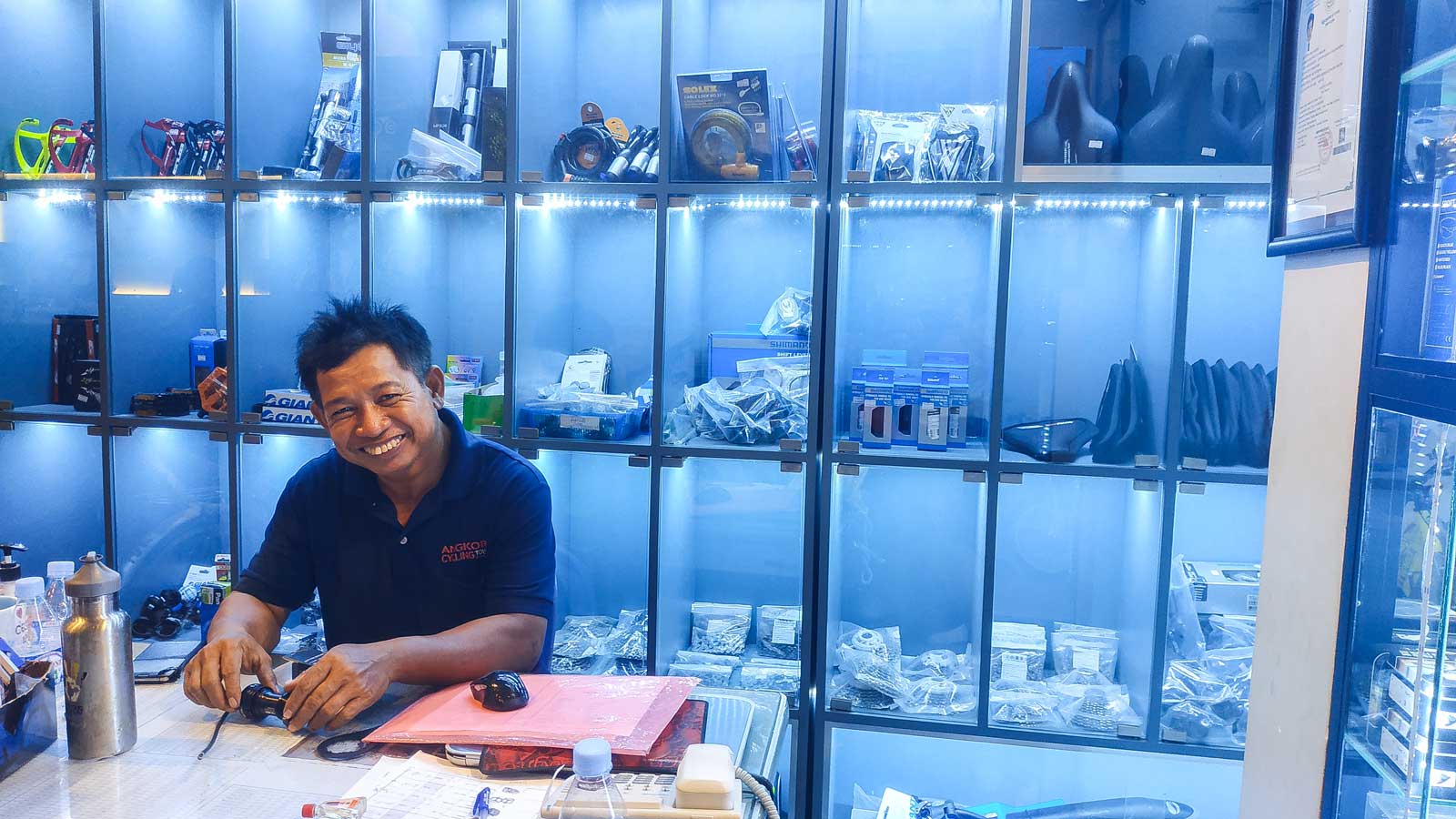
“A lot of people stay at home because they don’t have jobs. When they cycle, they feel refreshed, and it’s an activity they can do with their friends,” he says.
Bobo has been biking at least 40km six days a week for almost ten years and knows the area’s cycling paths inside and out. He offers tours through jungles, villages, and of course the temples. He’s not surprised people have fallen in love with the sport as of late.
“Riding on a stationary bike at the gym, you’re in the same place the whole time. When you go to the countryside, you see water buffaloes and birds,” he says.
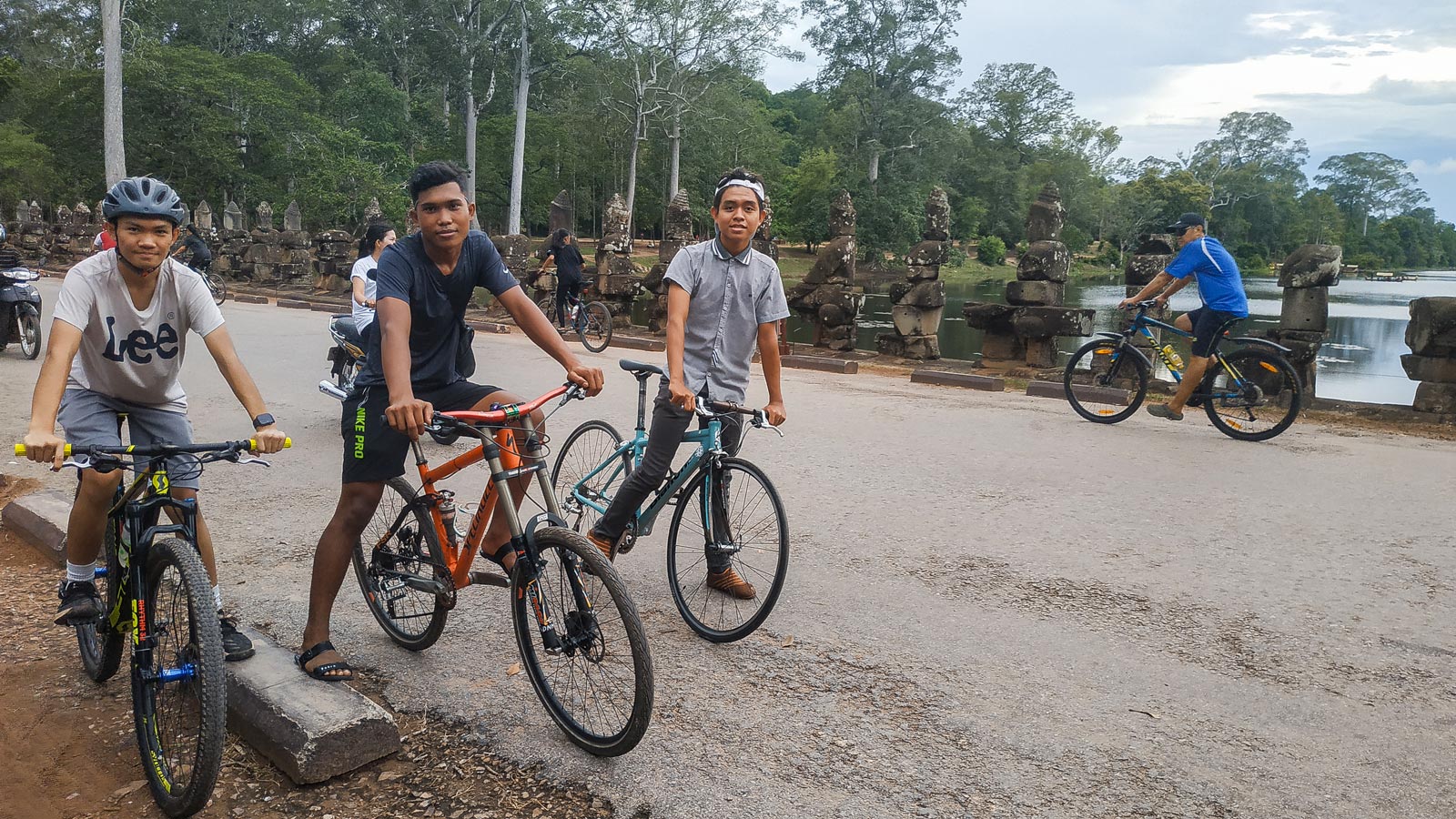
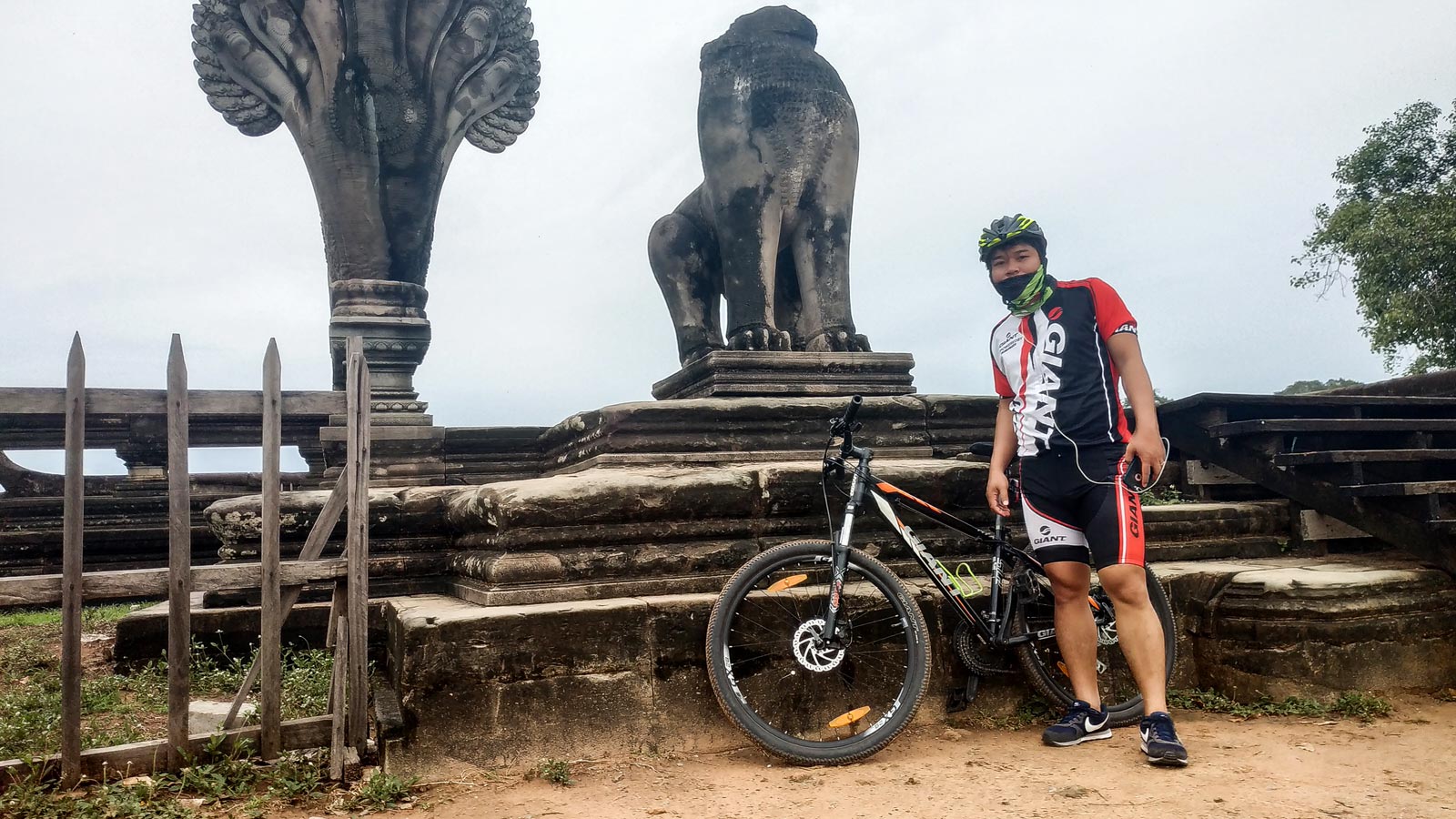
Bobo used to be able to rent bikes for $5 or more per day to foreigners, but now he relies on renting to locals for $3 per day
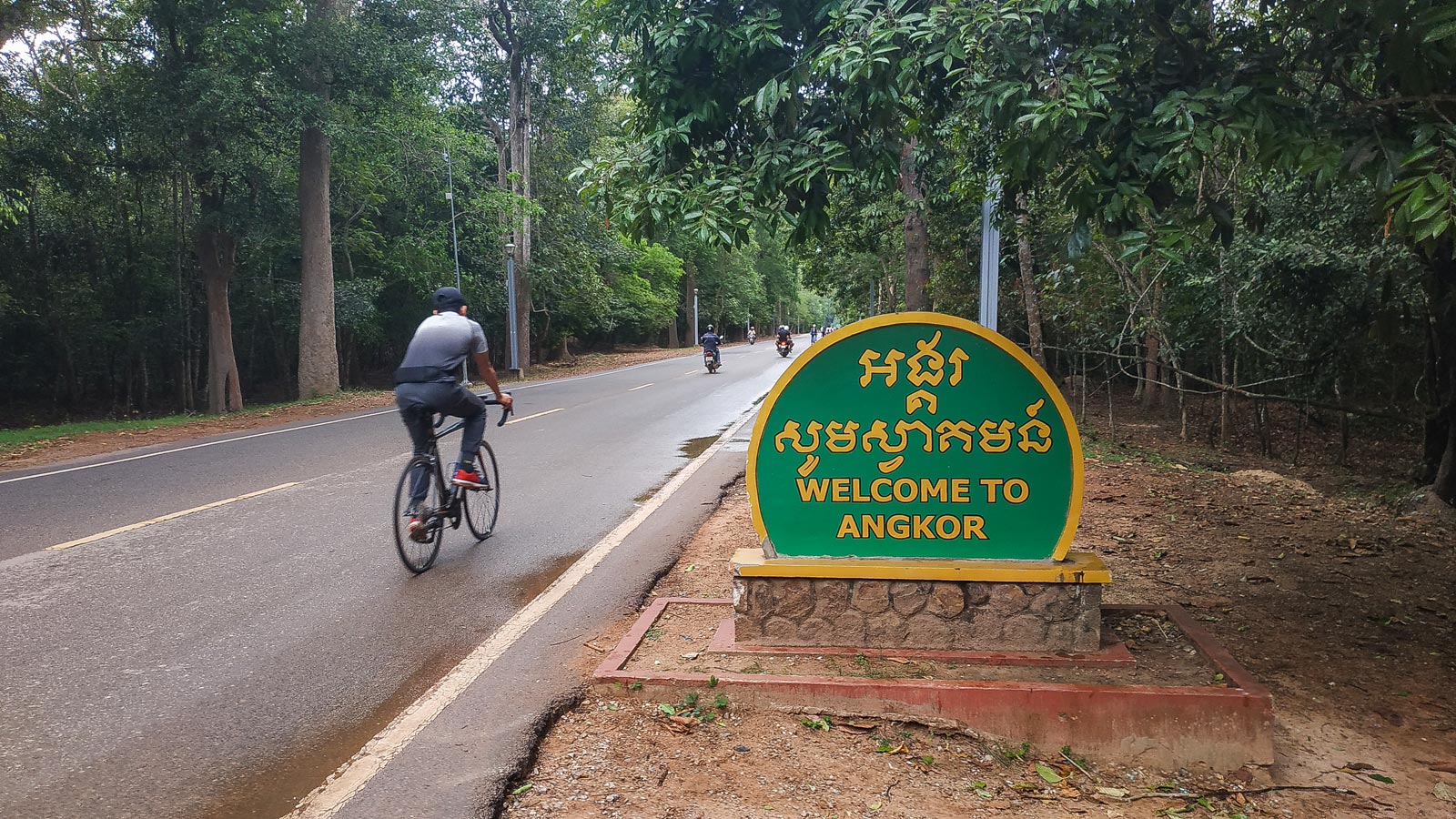
But despite the increase in bike sales, his overall profits are still down due to the changing makeup of the town.
Bobo used to be able to rent bikes for $5 or more per day to foreigners, but now he relies on renting to locals for $3 per day. In addition, as the virus-induced job drought stretches on, he says people have less and less money to spend on bikes, while his guided tours have also decreased as they rely heavily on first-time visitors and international tourists.
Another effect of the virus has been a disruption in supply chains for Giant bicycles. Bobo is one of two Giant-licensed bike shops in Siem Reap and he usually receives his bikes directly from a factory in China. With that no longer an option, Bobo has turned to importing from Thailand and Malaysia – a more time-consuming and expensive process.
Pisal Aing, one of the owners of Aing Kinsman Bicycles in Siem Reap tells a similar story. At the end of April, he started seeing an upswing in sales, with all new models selling out.
“Since the virus outbreak, I have sold many bikes, even the old bikes because we ran out of stock [of new models],” he says.
Aing adds that like Bobo, he has taken a hit on rentals as there are no foreigners to pay top dollar for them. But he attributes the recent surge in cycling among locals to the ease of social distancing it offers, saying that the town also has ideal terrain for easy, scenic riding.
“Siem Reap has the best geography [for riding bicycles], there’s many routes around the park. People can ride everywhere.”
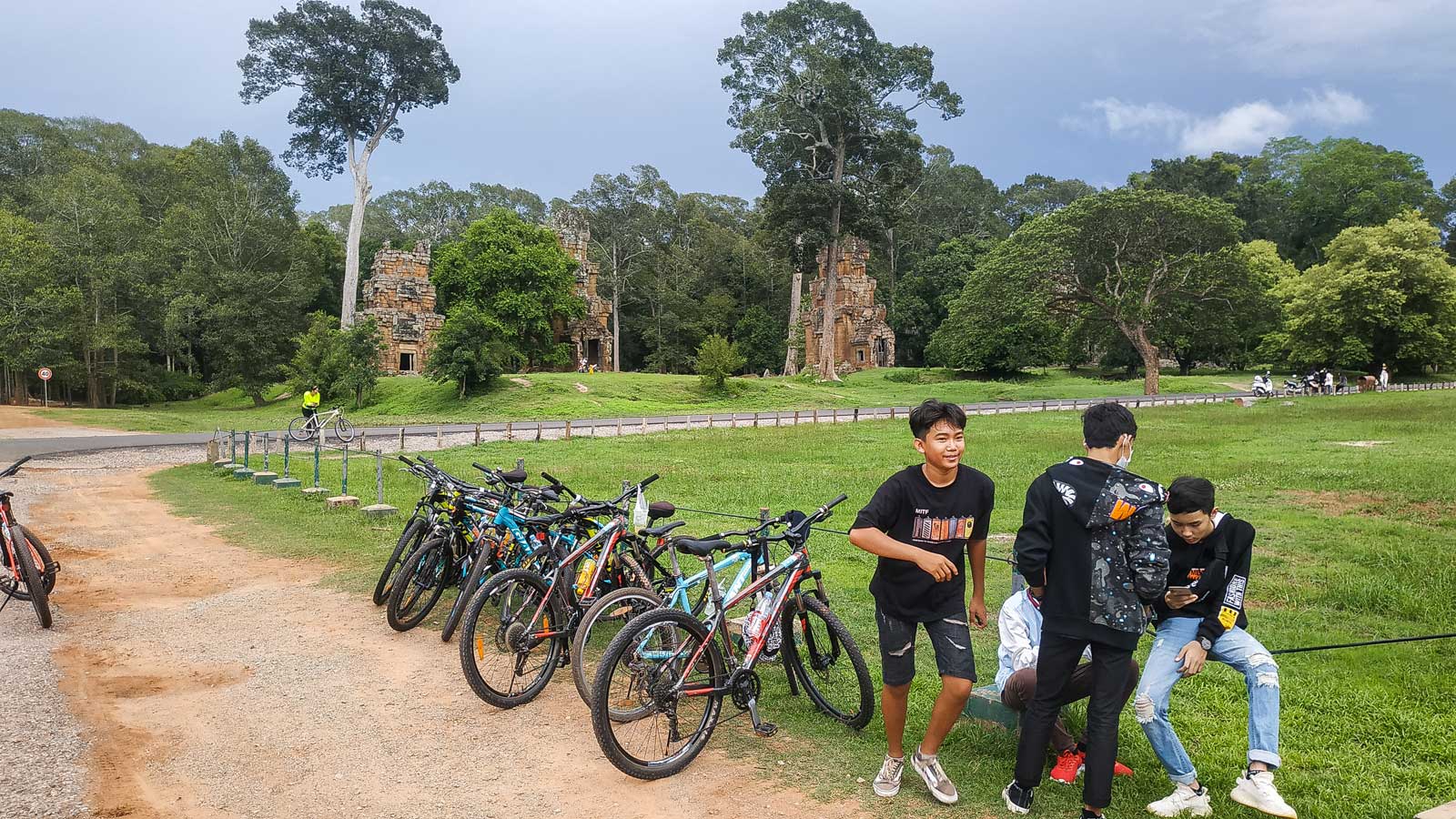
One new rider is Chhiv Lean, a Kampong Cham native who moved to Siem Reap in 2009. She lost her job over a month before Cambodia’s first virus case was reported in the town on March 7.
Ree, the four-star downtown hotel where she worked as a human resources manager, catered to Chinese tourists and when the virus started spreading in China, the hotel lost their customer base almost overnight.
Her boss let her go on February 1. She didn’t panic and chose to treat it like a small vacation, filling her time gardening, tending to her rabbits and going for hikes. But as she watched the virus spread across the globe, she realised her vacation was likely to be extended.
“At first, I thought maybe I can just relax since it was only spreading in China,” she says. “I thought in June or August it would be fine. But later, when the virus spread worldwide [I realised] it’s not a holiday anymore. It’s a big problem.”
By the end of February, she started to feel stir crazy. With gyms closed, cycling proved the answer as she bought a new bicycle and hit the roads. She quickly found cycling companions, joined group rides and became a regular at Angkor Wat.
“For me, cycling is the best exercise and I get to sleep faster than when I don’t cycle,” she says. I’ve made more biker friends on the road. It’s the best time killer, for whenever you feel down or stressed.”
On a recent evening temple trip, she brought her cousin from Sihanoukville along for his first ride ever – apparent from his decision to wear flip flops. When his legs grew tired from trying to keep up with the group, she’d ride alongside him, grab his arm and pedal harder to coax him.
Lean has also seen far more cyclists since the pandemic reached Siem Reap.
“Before only a few real bikers were on the roads during weekends. But during the virus, even on weekdays people are cycling.”
Dee, a local cyclist who is fluent in English, Spanish, German and Khmer, was working as a tour guide at an international company when the virus wiped out the company’s revenue. He was informed he no longer had a job in April.
Soon after, he bought a Giant ATX, a hybrid-style bike capable of conquering most terrains and started riding to keep fit and clear his mind.
“It helps me not to think crazily about losing my wage and joblessness,” Dee says of cycling. “It kills some stress and it can help me to freshen up my mind. I like to ride through the jungle, then I just focus on my way and I don’t think about other things.”
Like many others, he doesn’t know when or if his job will be waiting for him in post-virus Siem Reap. His company told him they would contact him in July.
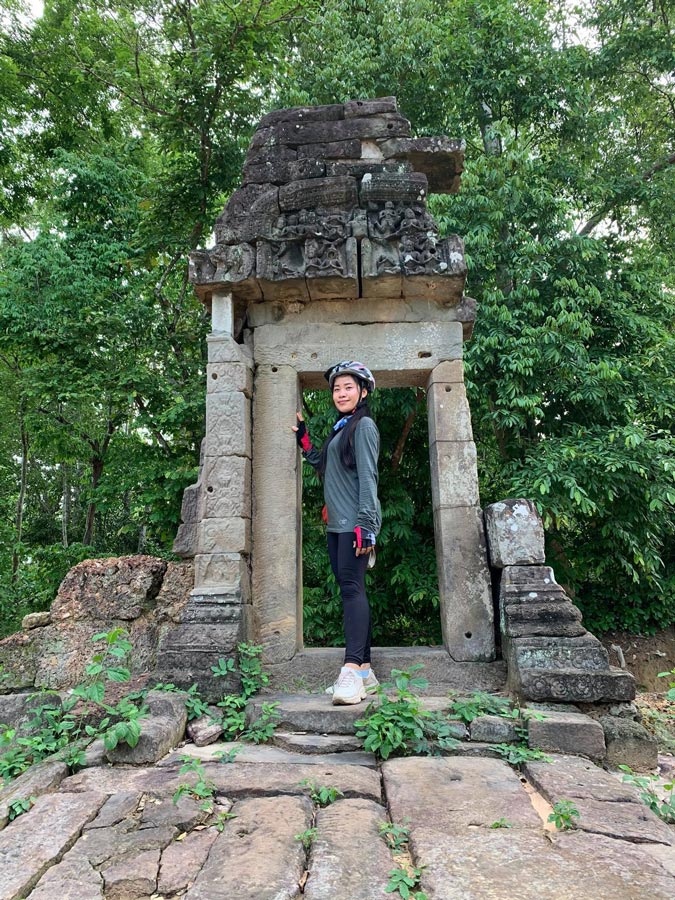
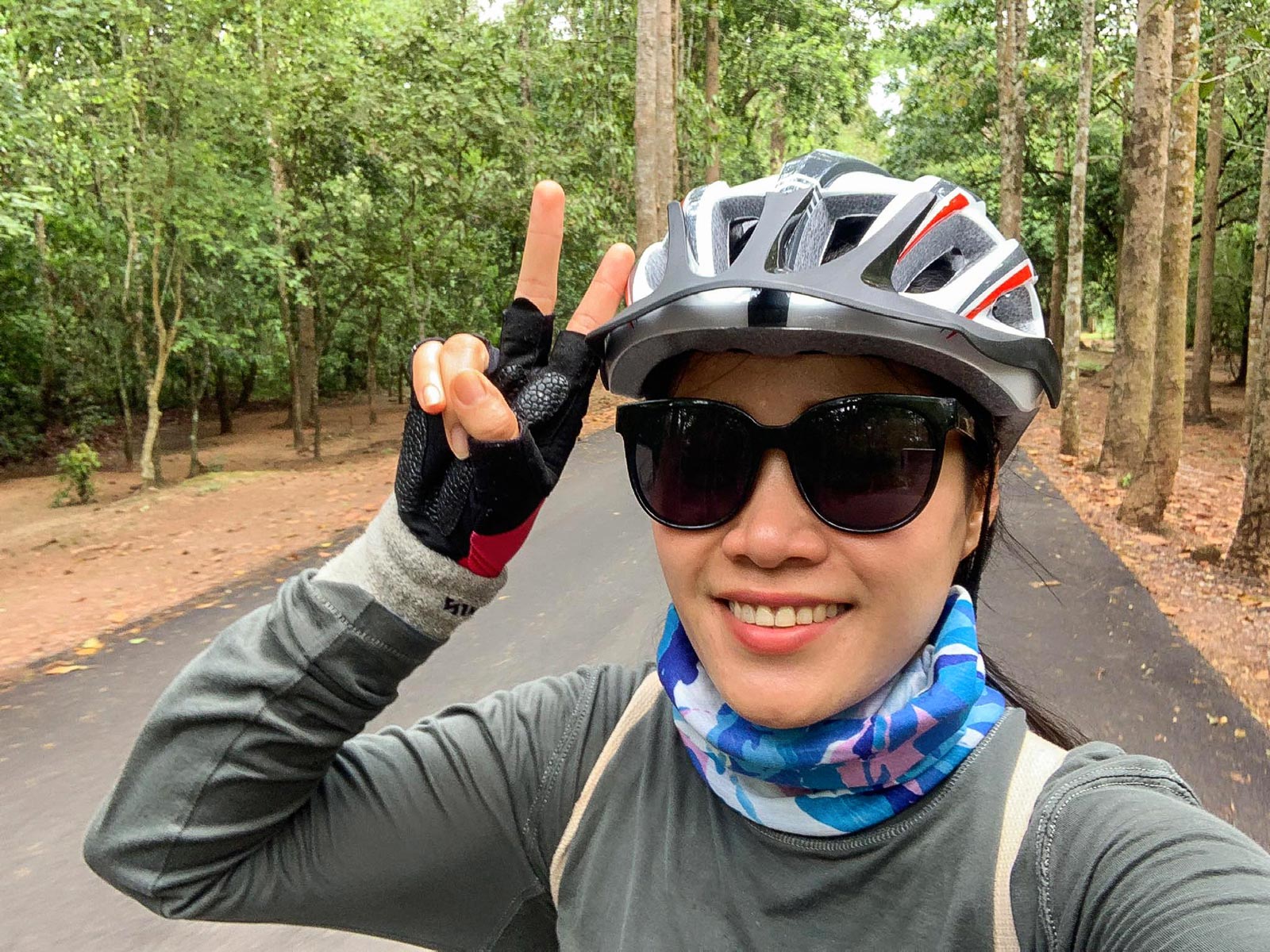
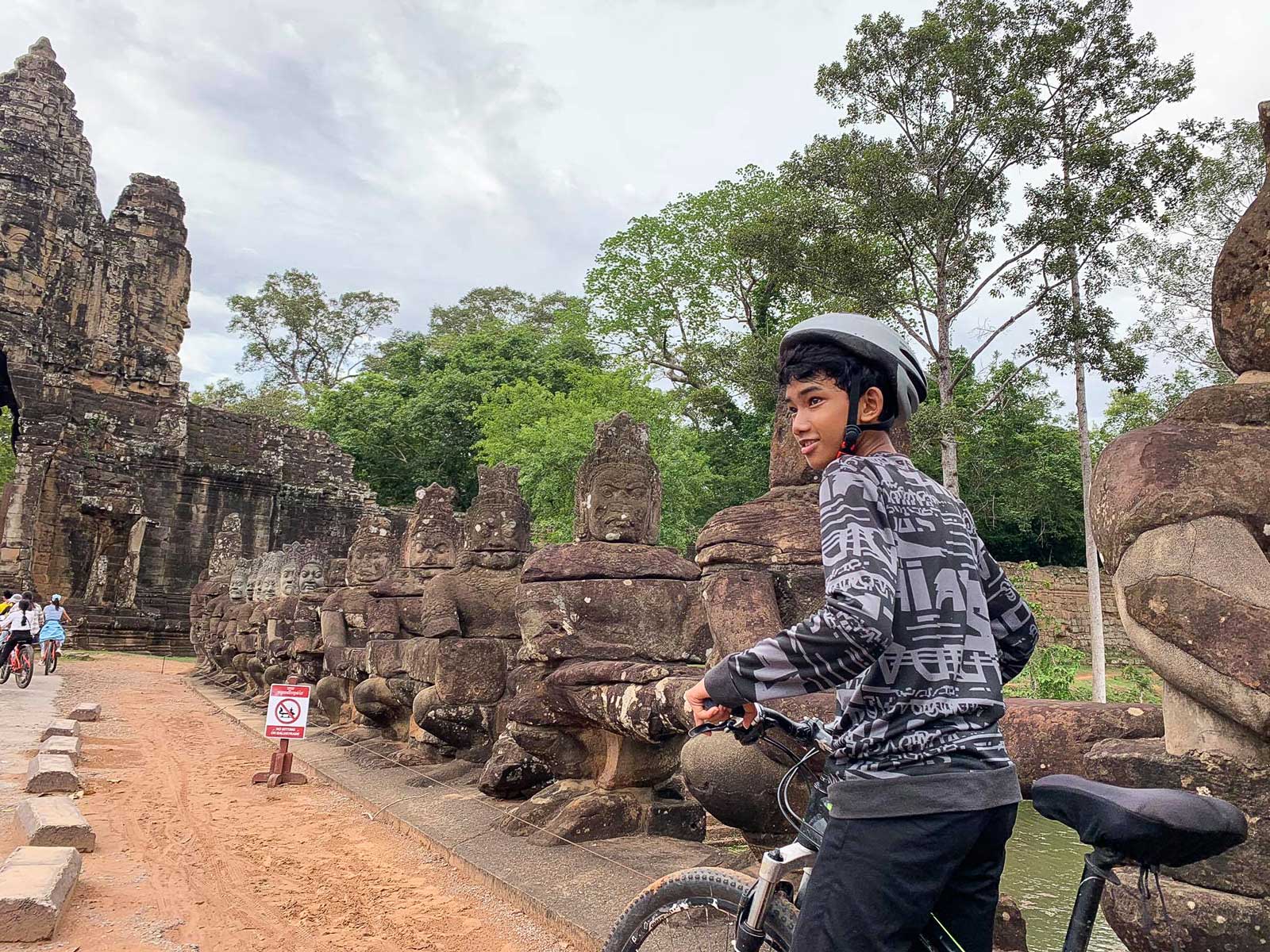
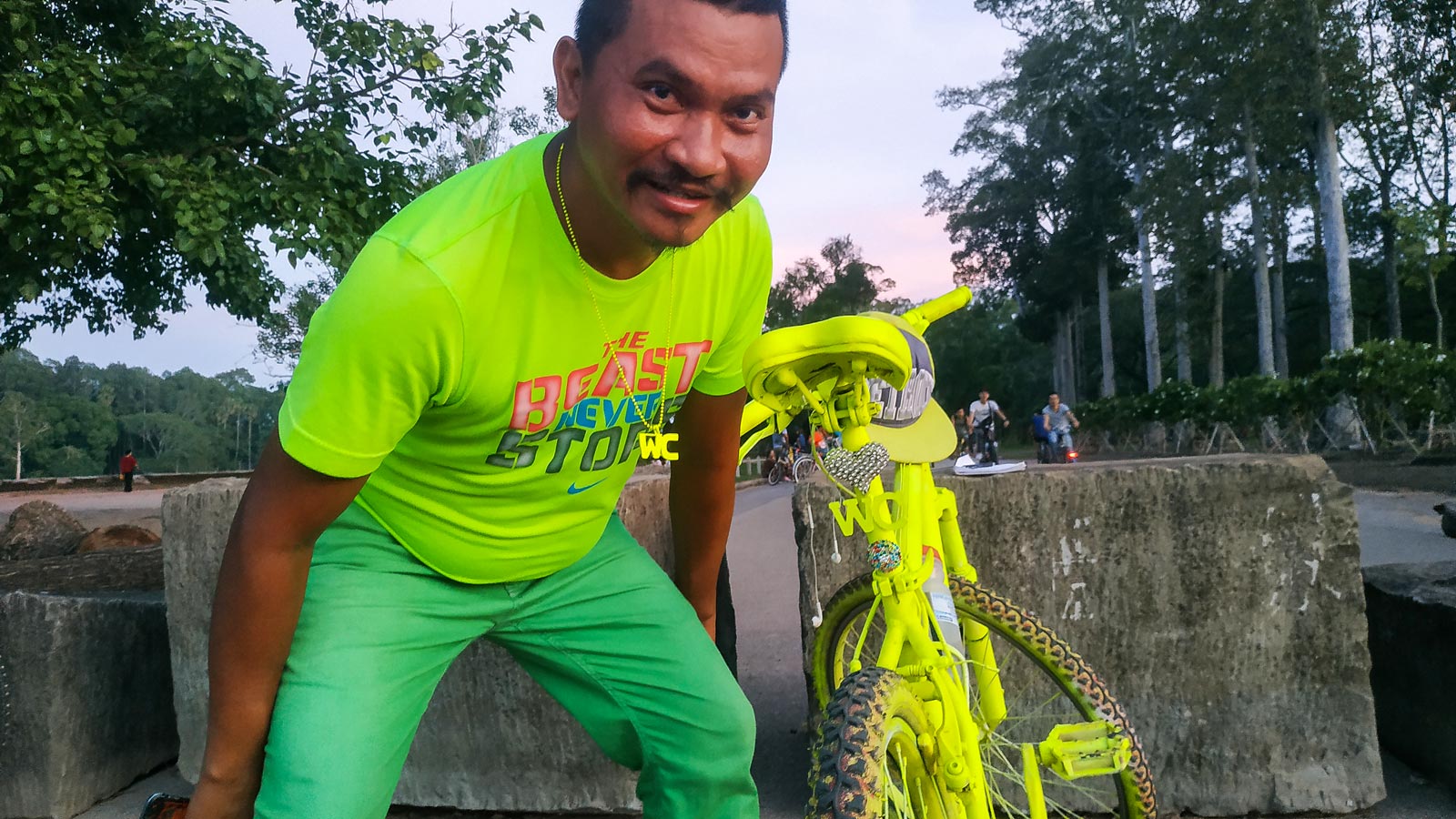
It’s not just locals riding out the virus in Siem Reap, with foreigners also jumping on the cycling bandwagon.
British national Benedict Tweedie found himself stranded in Cambodia after China implemented a travel ban on foreigners a day before he was scheduled to fly back to Wuhan, the original epicentre of the virus and where he taught English.
He bought a used bike in Phnom Penh, his first temporary home in Cambodia, and once the novelty of cycling the congested, noisy streets of the country’s capital wore off, he packed the backpack he’s been living out of since January, threw his bike in the belly of a bus at Central Market, and moved to Siem Reap.
Cycling through the historic temples and the surrounding jungles and villages has helped him stay busy as he tries to plan his future amid a global crisis.
“Being stranded has at times been completely paralysing … Getting my bike reminded me of the wonderful escapism that a bicycle can offer,” Tweedie says.
He’s met others on the trails in similar situations.
“I definitely think this [escapism] is a shared aspect of cycling during the coronavirus. It is not uncommon to meet fellow cyclists in the area that have been out of work for over 90 days through no fault or choice of their own.”
At Angkor, one of Tweedie’s favourite routes is a ride atop the perimeter wall of Angkor Thom, an ancient city featuring Bayon – an extravagantly designed temple featuring iconic carved smiling faces.
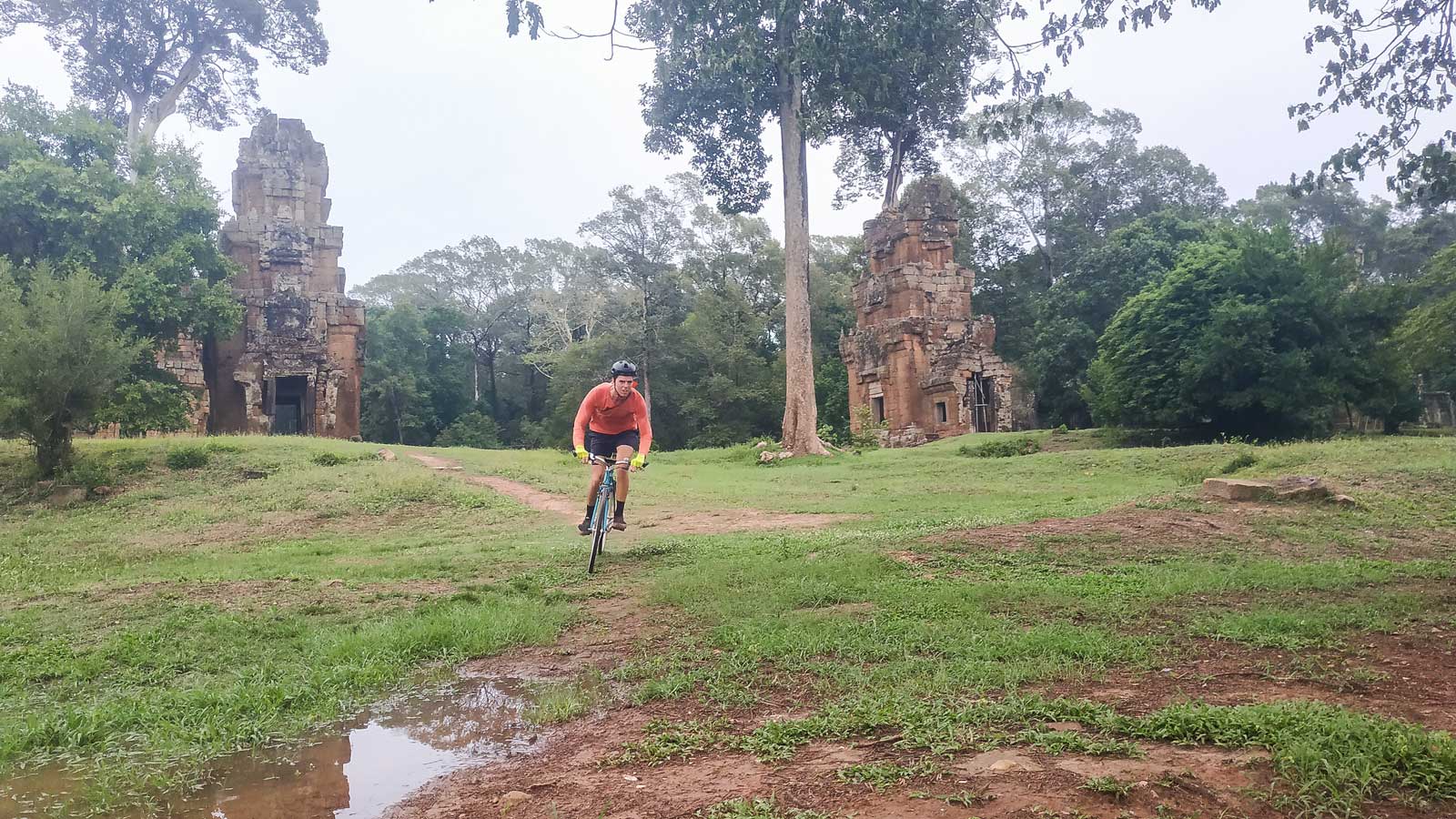
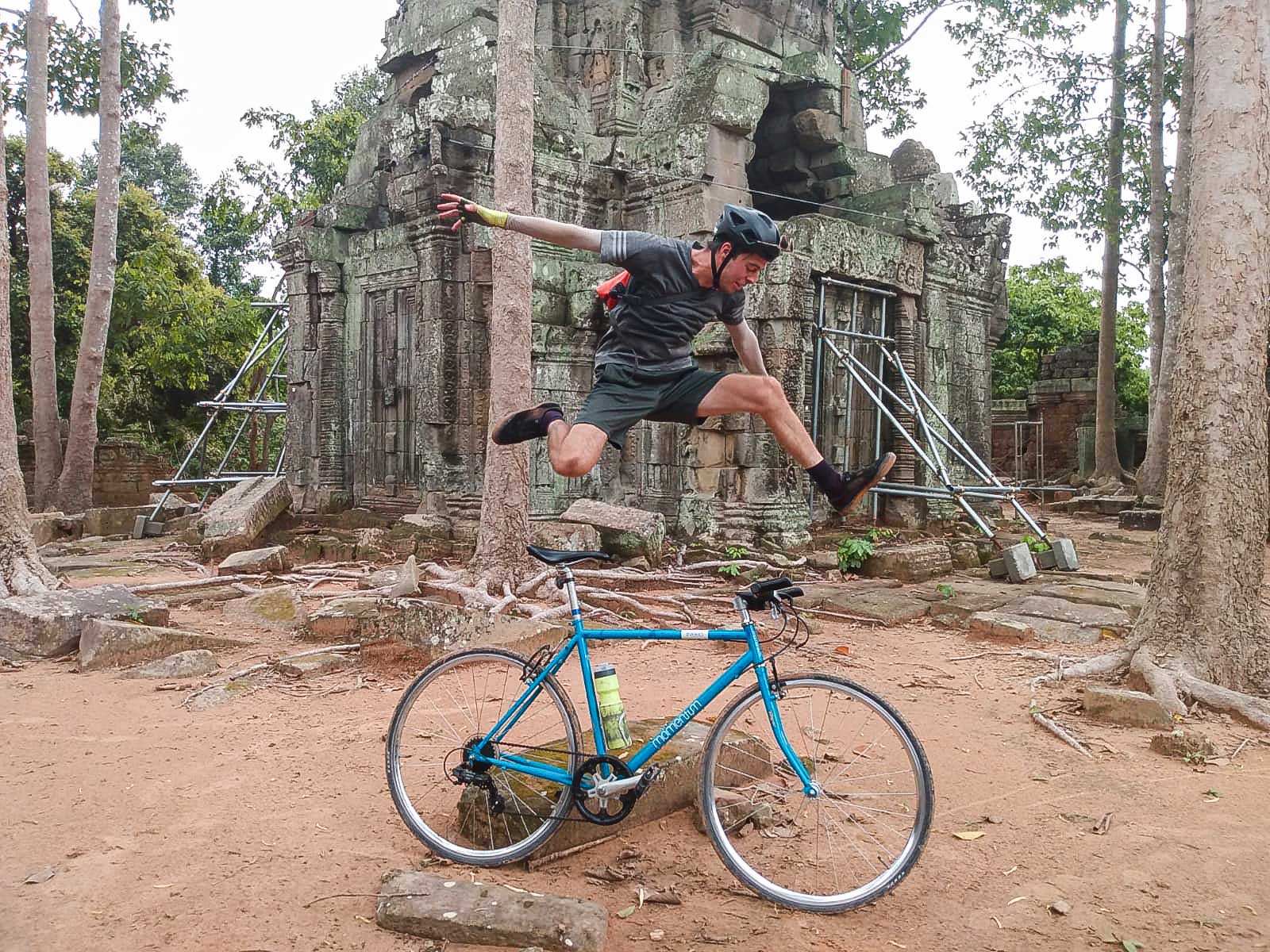
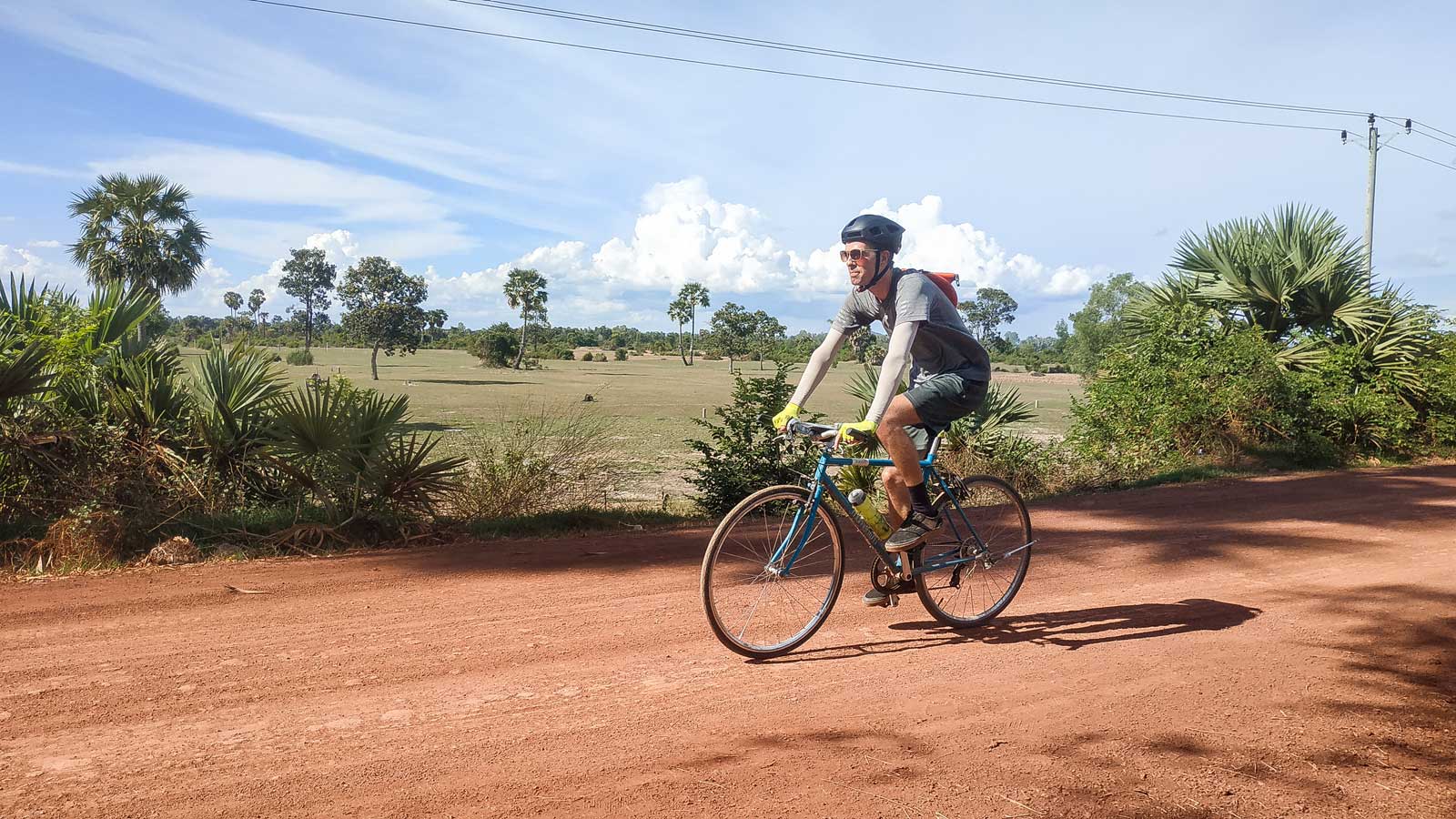
I do not recommend you ride on the guarded roads around the temples [without a ticket], but if you should happen to pop out of the jungle next to an ancient temple it wouldn’t be such a bad thing, would it?
Foreigners are required to buy tickets to cycle on the roads weaving in and out of Angkor, even if they don’t intend on visiting the temple interiors. But, as Tweedie found out, there are remote jungle paths which lead to the roads.
It’s not uncommon to come across smaller, unguarded temples hidden in the jungle, either.
“I do not recommend you ride on the guarded roads around the temples [without a ticket], but if you should happen to pop out of the jungle next to an ancient temple it wouldn’t be such a bad thing, would it?” he says.
At 5:30pm, the guards stop checking passes, pack their bags and go home. Everyone, foreigners included, is allowed to roam the park for as long as they can stand the darkness. It’s tempting to stay deep into the night, especially when equipped with good lights, but the pitch-blackness and unnerving whine of insects add to the anxiety of finding your way out of the maze of temples.
Once back in town, though there are enough restaurants, cafes and bars open to satisfy a post-ride craving, the major pockets of shuttered shops and empty guesthouses serve as a reminder that things remain far from normal.
While cycling in a tourist-free Siem Reap is a pleasant escape for those trapped in the monotony and uncertainty of the town’s virus-hit landscape, the more pressing issue for people is bringing tourism back. Some locals are looking towards the end of the rainy season in the fall as a possible time for a tourist revival – without it, thousands of recently unemployed workers may be out of work for good.
In the meantime, Angkor remains a cycling haven, and there’s never been a better time to experience it on two wheels. Just pack a poncho and keep an eye on the sky.


